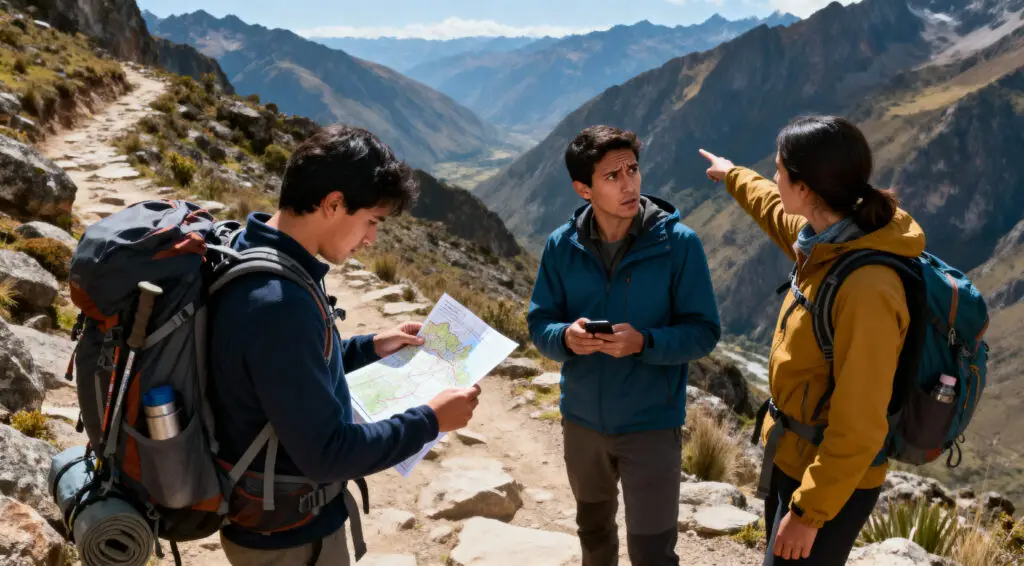Fake Destinations Reveal Risks Of Overreliance On AI Travel Planning
AI-generated travel plans are sending people to places that don’t exist, which wastes money and could be dangerous. Tourists in Peru followed ChatGPT’s advice and hiked toward the “Sacred Canyon of Humantay,” which is a made-up place that combines unrelated place names in a way that is not accurate.
Local hiking experts said that this fake destination could have put travelers at very high altitudes without proper guidance or access to oxygen. These kinds of things show how risky it is to blindly trust AI-generated travel plans, especially when you’re going to a hard place that needs careful planning.

AI Travel Errors Create Logistical Nightmares for Unprepared Tourists
AI tools can give travelers wrong information about things like operating hours, routes, or even made-up landmarks, leaving them stuck without warning. A couple in Japan used AI to plan a romantic hike up Mount Misen, but they found out that the ropeway had closed earlier than they were told it would.
They were stuck at the top and had to deal with extra stress and safety concerns because the AI data was wrong. These kinds of mistakes mess up plans and show why it’s still important to double-check important logistics with official sources before going on AI-suggested trips.
Statistical Text Generation Causes AI Hallucination Phenomena
Large language models create text by guessing which word sequences are most likely to happen, not by accurately understanding real-world situations. Experts say that these systems can’t tell the difference between real travel advice and made-up information when making itineraries.
Because AI doesn’t understand the context, it can “hallucinate,” which means it can confidently present made-up information as if it were real. Because these hallucinations look like real answers, travelers often don’t realize they’re wrong until they see the effects in the real world while they’re on their trips.
Recommended Article: Accenture Restructures Workforce With Bold AI Reskilling Plan
Surveys Show Significant Traveller Dissatisfaction With AI Itineraries
Recent surveys show that a lot of people who use AI to plan their trips are having problems. Thirty-seven percent said they didn’t get enough information, and thirty-three percent said they got completely wrong recommendations, such as fake attractions or travel routes that were impossible to follow across entire countries.
These numbers show that AI itinerary planning technologies have problems that are built into the system. AI is useful, but it isn’t always reliable, so users need to be careful and double-check everything to avoid making costly mistakes, having problems with logistics, or putting themselves in dangerous situations while traveling abroad.
Viral AI Content Amplifies Travel Misinformation Rapidly
AI-generated travel misinformation often spreads quickly on social media, tricking people all over the world. Some tourists went to Malaysian cable car attractions that didn’t exist after seeing fake promotional videos made by AI that were meant to get the most people to watch them.
This kind of viral content makes it hard to tell what’s real and what’s not, which confuses a lot of travelers who don’t know what’s going on. Without good rules or ways to check information, false information can spread quickly, affecting a lot of people at once before mistakes are found and fixed.
Governments Develop Regulations to Counter Travel Misinformation Threats
Several governments are working on rules to find and stop AI-generated false information from spreading too far because they see that the risks are rising. These efforts are meant to make AI developers more responsible and make digital travel platforms safer for customers.
Regulatory frameworks may require things like openness, mandatory disclaimers, or rules for automatically checking facts. These steps are meant to stop the spread of false information and protect travelers from accidentally following fake or misleading itineraries made by advanced language models.
AI Trip Planning Highlights Need to Prioritize Real Cultural Experiences
Experts say that AI-generated hallucinations change how travelers see things before they even leave, which hurts real cultural exchanges. Psychotherapists stress that real travel builds empathy and understanding by letting people meet face-to-face and have firsthand experiences, which AI-made experiences don’t do as well.
As AI technologies become more common in trip planning, it’s still important to stay aware of what’s important and put real experiences first. Checking information on your own and talking to people in the places you visit makes sure that travel continues to be a good way to grow as a person and connect with people from other cultures.



















